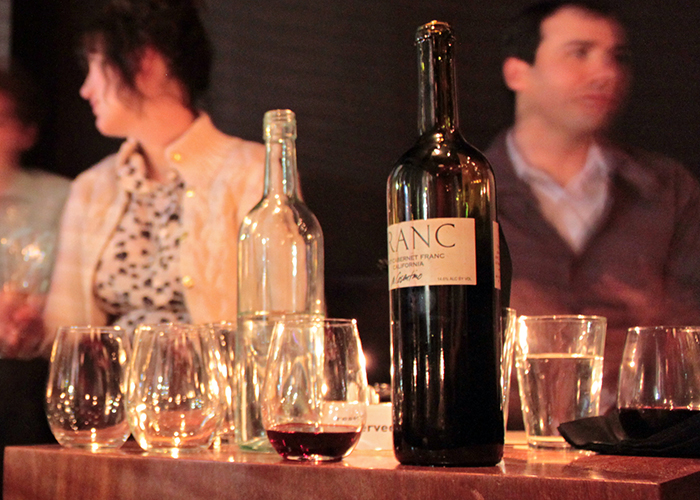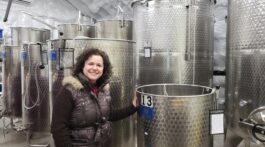A glass of wine at dinner is an essential part of the meal. We love to have a glass or two or maybe some to sip while cooking. Sometimes the wine is everyday ordinary, sometimes it might tell a particular story that goes along with the dinner, and once in a while it’s a memorable, special occasion wine.
Regardless of the category, it’s hard to finish the whole bottle. For the two of us, half the bottle seems about right. More than a half makes it hard to stay alert till bedtime. This leads to the question of how to keep the wine in the open bottle fresh and drinkable. My niece seemed surprised to hear that we had this problem. Apparently, there aren’t any wine leftovers at her house. Ah, youth!
Air is the enemy here. When the wine comes in contact with air, the delicate aromas and flavors dissipate, leading to a loss of freshness. Wine in the glass sends out enticing aromas, known as the bouquet or nose, which is a big part of the pleasure of wine drinking. Wine enjoyment usually starts with a sniff of the wine to experience the invitation of the wine’s bouquet. In an open storage container, these delicate fragrances are lost to the air, diminishing the experience of the wine.
Prolonged exposure to air will also result in oxidation – spoilage of the wine through contact with oxygen. Some wines, like Sherry, are intentionally oxidized and are known for the characteristic musky aroma, but in table wines, it’s considered damage. Old white wines that have darkened with age have oxidized, even though the bottles were never opened.
The small amount of air between the cork (or cap) and the wine in an unopened bottle is not a problem. For red wines that are meant to be aged, tiny amounts of air do come through the cork and are a natural part of the wine’s development over time. For wines meant to be consumed soon after purchase, that little bit of air won’t make a difference.
The answer for the half full bottle question is to keep air away from the wine. There are numerous ways to accomplish this, some more successful than others.
For everyday wines that are usually bought in quantity or in big bottles, consider wine in a box instead. The wine box holds the equivalent of 4 bottles in a plastic bag inside the box. The bag (which is flavorless ) collapses as wine is drawn off, so no air replaces the wine as it is dispensed. We almost always have a box of red on the counter and a box of white in the fridge for everyday and cooking use. The wine will keep for at least a month after opening, although in practice, it seldom lasts that long. Some favorite reds are Bota Box Old Vine Zinfandel – a rich hearty red and La Vieille Ferme, a lighter Southern Rhone blend from the legendary Perrin family. For whites, try Sauvignon Blanc or Chardonnay (both available in diverse styles) to see what you like or Bota Box Pinot Grigio.
The Vacu Vin pump is used to extract the air from open glass wine bottles. This inexpensive system consists of a special stopper and a simple hand pump to suck the air out of the bottle. While it does not get out all the air, a good deal is removed. The science is a little unclear on how effective this system is, but it can’t hurt. It’s what I use for a bottle to be kept for just a few days. The stopper also makes a nice air tight seal to prevent any dripping in the fridge. This will not work for sparkling wines, since sucking out the air only makes the bubbles burst and the wine flat. Keeping open wine in the refrigerator will help maintain quality. Store the bottle upright to minimize the surface area.
Air replacement systems are very effective, but rather expensive: worth it if you are keeping special wines, but not necessary for everyday use. These systems inject a neutral gas into the bottle (usually nitrogen) to replace the air. The oxygen is completely displaced eliminating the loss of quality that it causes, and the the bottle is tightly sealed. The gas will not adversely react with the wine, preserving freshness and flavor almost indefinitely.
Some wine bars have elaborate multi-bottle systems for injecting gas into open bottles to keep their offerings fresh. This is very effective when lots of variety is offered. Bottles may be open for several days with no loss of quality. These systems demonstrate a commitment to offering top notch wines by the glass. Beware of restaurants which have long lists of wine by the glass and keep them behind the bar with a cork jammed in the top.
For using up wine remainders at home that have been kept too long, consider starting a vinegar jug or barrel. It’s as simple as getting some vinegar starter and a glass or wood container. Add your wine remnants and draw homemade vinegar as needed. I have a wooden barrel for this purpose, but will confess that it’s not currently in use. I need to get it re-started.
The alternative to all these methods is to just drink it up . No leftovers, no problem. If you aren’t concerned about falling asleep on the couch, then here’s to finishing that bottle!












No Comment